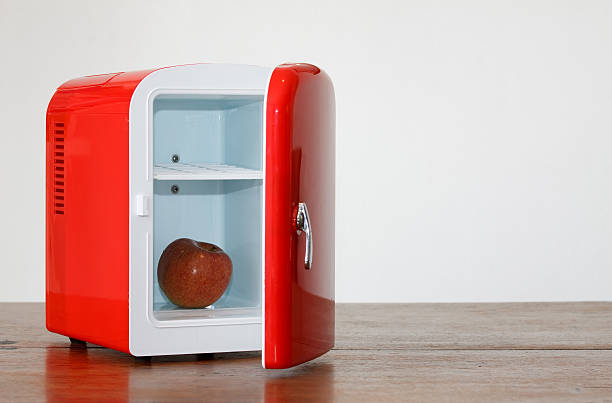
Mini fridges are not allowed in carry-on luggage, but some airlines may accept them in checked baggage. However, they must be free of any liquids or drinks, and they may contain hazardous refrigerants and compressors that could pose a risk to the aircraft’s safety.
The main reason why mini fridges are not allowed in carry-on luggage is that they contain refrigerants and compressors that could be toxic and flammable. According to the TSA, these items are considered a potential hazard and could endanger the safety of the passengers and crew. Therefore, they are not permitted through the security checkpoint.
Another reason why mini fridges are not suitable for carry-on luggage is that they are too large and heavy to fit in the overhead bins or under the seats. Most airlines have strict size and weight limits for carry-on bags, and a mini fridge would likely exceed them. A standard mini fridge is about 30 to 35 inches in height, 18 to 24 inches in width, and 19 to 26 inches in depth, which is way above most airlines’ carry-on size.

While mini fridges are not allowed in carry-on luggage, some airlines may accept them in checked baggage. However, this is not a universal rule, and different airlines may have different policies and regulations regarding this matter. Therefore, it is always advisable to check with your airline before you pack your mini fridge.
For example, Southwest Airlines permits mini fridges in checked baggage, but they must be free of any liquids or drinks. They also advise passengers to pack them securely and label them as fragile. On the other hand, some airlines may not accept mini fridges at all, due to the risk of leakage or damage to the refrigerants and compressors.
If you find out that your airline allows mini fridges in checked baggage, you should take some precautions to pack it properly and protect it from damage during transport. Here are some tips to follow:

Q: Can I take an empty mini fridge on a plane?
A: An empty mini fridge is still not allowed in carry-on luggage, as it contains refrigerants and compressors that could be hazardous. Some airlines may accept an empty mini fridge in checked baggage, but you should check with them first.
Q: Can I take a thermoelectric cooler on a plane?
A: A thermoelectric cooler is a device that uses electricity to cool or heat food and beverages. Unlike a mini fridge, it does not contain refrigerants or compressors. Therefore, it may be allowed in carry-on or checked luggage, depending on its size and weight. However, you should still check with your airline before packing it.
Q: Can I take dry ice on a plane?
A: Dry ice is frozen carbon dioxide that can keep food and beverages cold for a long time. It is allowed in carry-on or checked luggage, but only in limited quantities and with proper packaging. According to the TSA, you can bring up to 5.5 pounds of dry ice per person, and you must pack it in a vented container that allows the gas to escape. You must also label the container as dry ice or carbon dioxide solid.
Taking a mini fridge on a plane is not as easy as it sounds. You have to consider the safety regulations, the airline policies, and the packing methods. Mini fridges are not allowed in carry-on luggage, but some airlines may accept them in checked baggage. However, they must be free of any liquids or drinks, and they may contain hazardous refrigerants and compressors that could pose a risk to the aircraft’s safety.
If you decide to bring your mini fridge on a plane, you should check with your airline first and follow their instructions. You should also pack your mini fridge securely and label it as fragile. And don’t forget to weigh it and make sure that it does not exceed your baggage allowance.
We hope this post has helped you understand the ins and outs of taking a mini fridge on a plane. If you have any questions or comments, feel free to leave them below. And if you found this post useful, please share it with your friends and family who love traveling cool!
